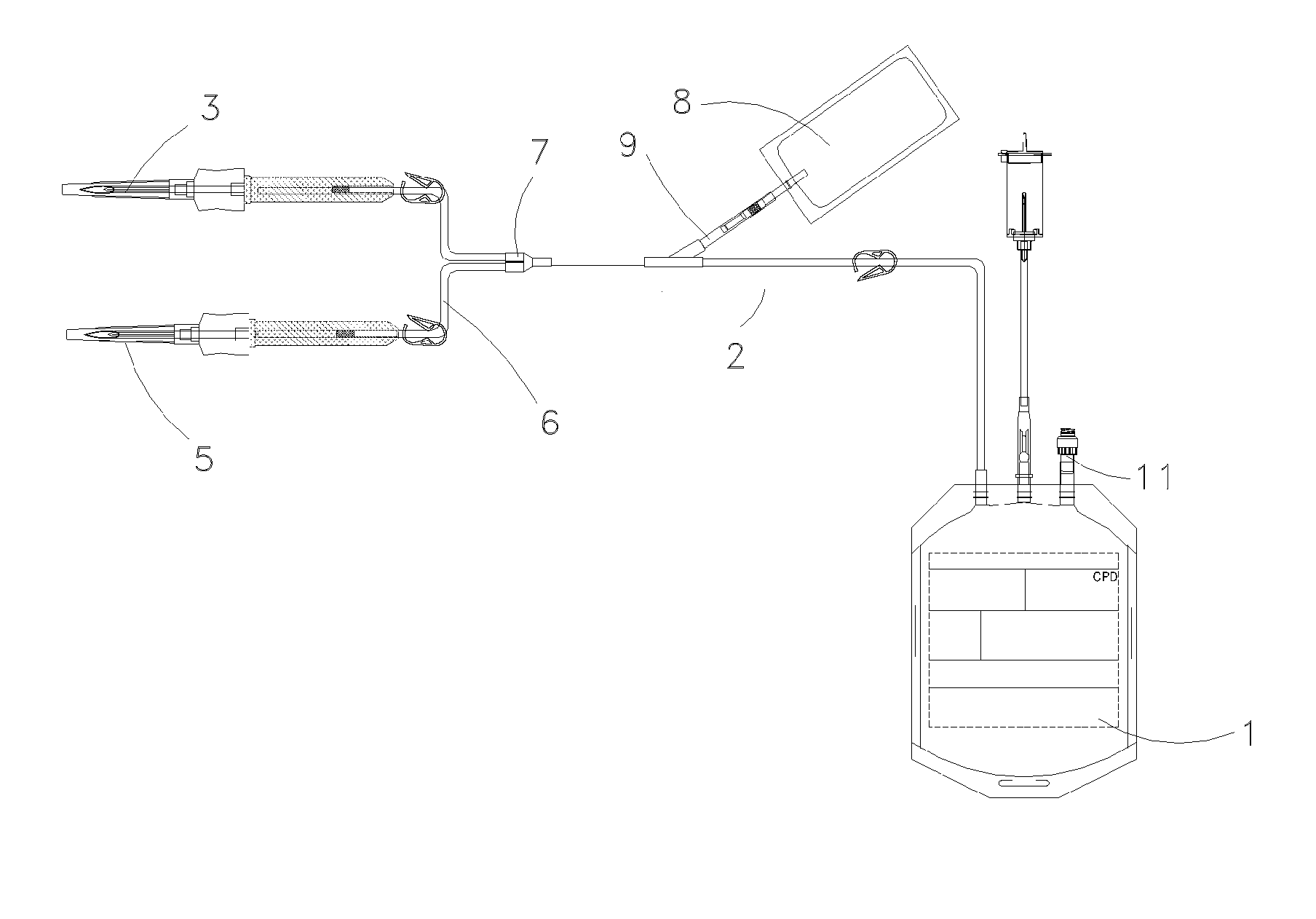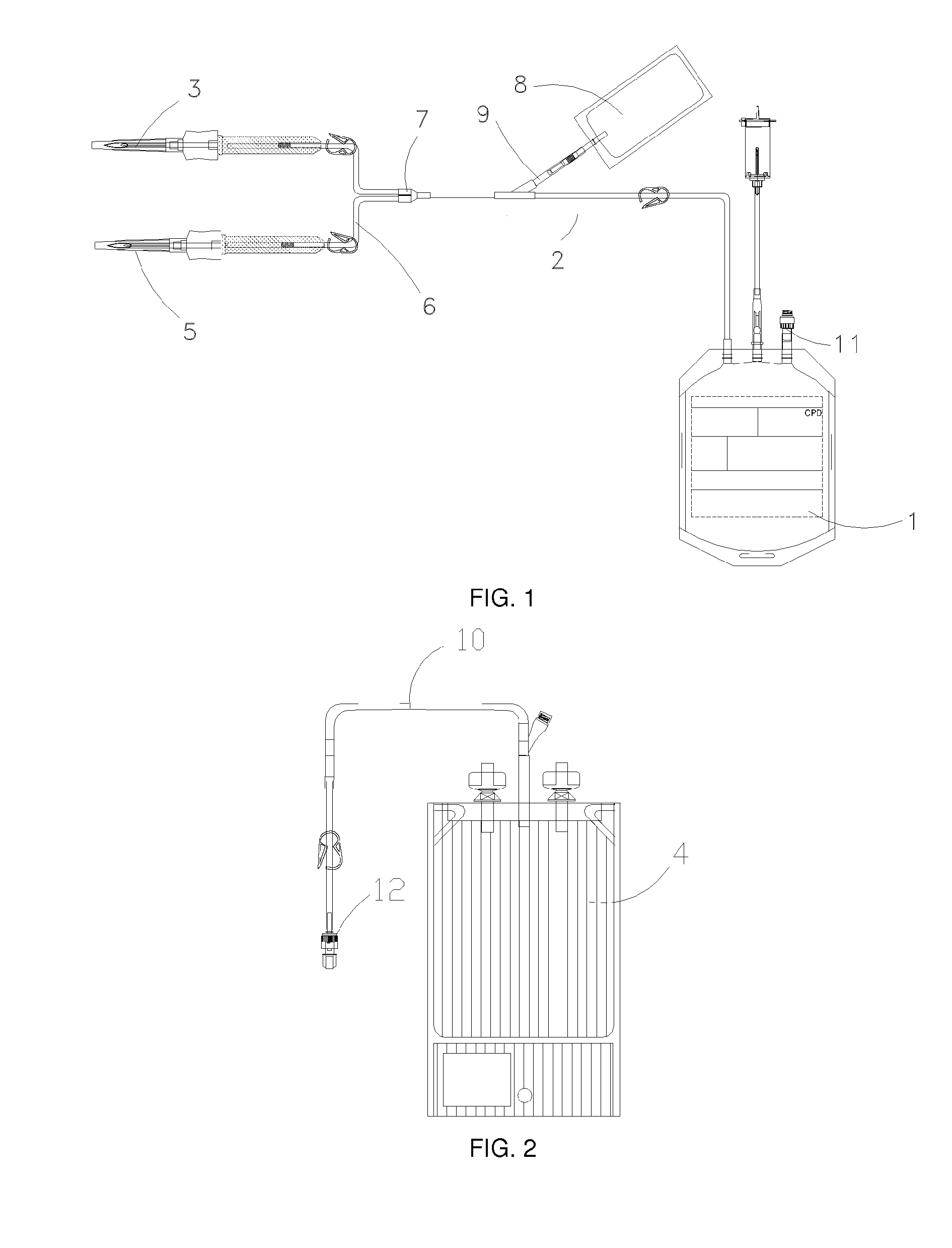Method for preserving placental blood
- Summary
- Abstract
- Description
- Claims
- Application Information
AI Technical Summary
Benefits of technology
Problems solved by technology
Method used
Image
Examples
example 1
“Miniature” Tests
Example 1.1
Effect of Using Air Barrier Bags
[0139]A blood sample (8 ml) originating from a placental blood unit (PBU) of less than 24 hours after the birth was transferred into a bag permeable to air (PVC) or an air barrier bag (TriC). The placental blood is then put in a refrigerator at +4° C. and stored for 3 days.
[0140]Under certain conditions, a preservation solution is added to the placental blood. The proportion of the preservation solution / blood is 1:2 (4 ml of preservation solution+8 ml of placental blood). This proportion is considered to be conducive to the development that is aimed at a clinical application.
[0141]Placental blood was then mixed with the preservation solution on arrival at the laboratory (<24 h) and preserved for 3 days at +4° C.
[0142]The series of experiments was carried out under the following 6 conditions:
[0143]Sdt PVC: 8 ml of placental blood in a PVC bag
[0144]MC01 PVC: 8 ml of placental blood+4 ml of MC01 in a PVC bag
[0145]NaCI PVC: 8 m...
example 1.2
Effect of the Preservation Solution
[0153]Another series of experiments was carried out in 30 ml PVC bags permeable to air. Blood originating from a placental blood unit (PBU) of less than 24 h after birth was mixed with the preservation solution (10 ml+10 ml). For control (Std), the placental blood does not contain any preservation solution. Placental blood is then put in a refrigerator at +4° C. and is stored for 14 days. The numbers of total cells, cells positive to the CD34 marker (CD34+) and CFC cells are determined at D0, 3, 8 and 14.
[0154]FIG. 6 shows the variation in the CFC percentage in comparison with D0 during this storage (D+3, D+8, D+14). A positive effect of the preservation solution on maintaining these functional progenitors at +4° C. can be seen.
[0155]The capacity of CD34+ cells preserved for two days (48 hours) with or without a preservation solution to amplify themselves ex vivo was tested under the same storage conditions. The expansion method used is described i...
example 3
“Full Scale” Tests
[0157]“Full scale” experiments, in other words with a standard PBU with a volume of between 80 and 120 ml, were carried out during which placental blood is preserved in bags permeable to air (PVC) or in air barrier bags (TriC) for 3 days (FIG. 8).
[0158]In this case also, the cells of interest (CD34+ and CFC) are preserved better in an air barrier bag than in a PVC bag that is permeable to air. This effect is more marked on the CD34+ cells than on CFC cells (which is contrary to the results for “miniature” tests).
[0159]Thus, this series of experiments shows that storage of whole placental blood in an air barrier bag can preserve cells of interest for at least 3 days at 4° C.
[0160]Preserving these cells for 3 days in an air barrier bag with or without a preservation solution (50 ml) was also tested. This series of manipulations shows that the presence of a preservation solution further improves the preservation of cells of interest, and particularly CFC clonogenic pr...
PUM
 Login to View More
Login to View More Abstract
Description
Claims
Application Information
 Login to View More
Login to View More - R&D
- Intellectual Property
- Life Sciences
- Materials
- Tech Scout
- Unparalleled Data Quality
- Higher Quality Content
- 60% Fewer Hallucinations
Browse by: Latest US Patents, China's latest patents, Technical Efficacy Thesaurus, Application Domain, Technology Topic, Popular Technical Reports.
© 2025 PatSnap. All rights reserved.Legal|Privacy policy|Modern Slavery Act Transparency Statement|Sitemap|About US| Contact US: help@patsnap.com



